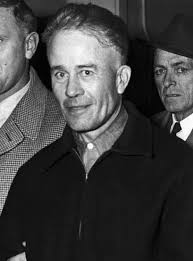Did Ed Gein Kill a Nurse? A Look into the Infamous Case

The Infamous Legacy of Ed Gein
Ed Gein, an American murderer and body snatcher, is infamous for his gruesome crimes that shocked the world in the 1950s. Known primarily for his connection to the making of human skin and body parts into various items, Gein’s legacy continues to disturb and fascinate. This article explores the question: Did Ed Gein kill a nurse?
The Allegations and Myths
There has long been speculation surrounding Gein’s murders, primarily his known victims, Mary Hogan and Bernice Worden. However, the claim that he killed a nurse remains unfounded. While there is no direct evidence linking Gein to the murder of a nurse, various narratives and urban legends have developed around his notoriety.
Background and Investigation
Ed Gein was apprehended in 1957 following the disappearance of Worden, a hardware store owner in Plainfield, Wisconsin. After searching his farm, police discovered horrifying evidence, including decapitated bodies and various body parts. Gein’s disturbing practice of exhuming corpses from local graveyards made him the prime suspect in several unsolved cases, including potential disappearances of women, some of whom were nurses. The nursing profession often garnered attention because of Gein’s troubling history with women. Nonetheless, specific claims regarding his involvement in a nurse’s death appear to be anecdotal rather than substantiated.
The Impact of Gein’s Crimes
Despite the lack of evidence regarding the nurse allegation, Ed Gein’s activities have influenced popular culture, spawning films and literary works that have captivated audiences worldwide. His story has been adapted into characters like Norman Bates in “Psycho” and Leatherface in “The Texas Chainsaw Massacre,” further intertwining fact with fiction.
Conclusion: The Legacy of a Notorious Figure
In conclusion, while Ed Gein undoubtedly engaged in horrific acts and is responsible for the deaths of two confirmed victims, the narrative surrounding the murder of a nurse appears to be more legend than fact. This mystery contributes to the allure of Gein’s story, reflective of a broader societal fascination with serial killers and their psychological profiles. As more information surfaces and is analyzed, it serves as a reminder of the importance of separating fact from fiction in understanding such dark chapters of history. For true crime enthusiasts and historians alike, Ed Gein remains a figure encapsulated in intrigue, horror, and myth.








